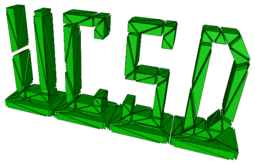| Michael Holst | ||
| https://ccom.ucsd.edu/~mholst/ |
Distinguished Professor of Mathematics and Physics UC San Diego |
|
|
Math 273A (Scientific Computation)
 Instructor: Prof. Michael Holst
Instructor: Prof. Michael HolstTerm: Fall 1999 (10:10-11:00 MWF, MCGIL 1111) 273A-B-C. Scientific Computation (4-4-4) Continuum mechanics models of physical and biological systems, finite element methods and approximation theory, complexity of iterative methods for linear and nonlinear equations, continuation methods, adaptive methods, parallel computing, and scientific visualization. Project-oriented; theoretical and software development projects designed around problems of current interest in science and engineering. Prerequisite: experience with MATLAB and C, some background in numerical analysis, or consent of instructor. (F,W,S) In Math 273A-B-C, we will study the approximation theory foundations of finite element modeling, and we will learn how to build realistic finite element models of physical objects, such as electrostatic and elasticity models of biological molecules and membranes for use in drug design, and elasticity models of clothing and human skin for use in computer animation. The course will be project-oriented and interdisciplinary; we will pick a couple of interesting but hard problems from an application area the first week of class, and then we will spend the rest of the quarter building up the tools (both theoretical and software) to solve the problem, in a provably good way. Our time in 273A-B-C will be split up each quarter as follows:
|
